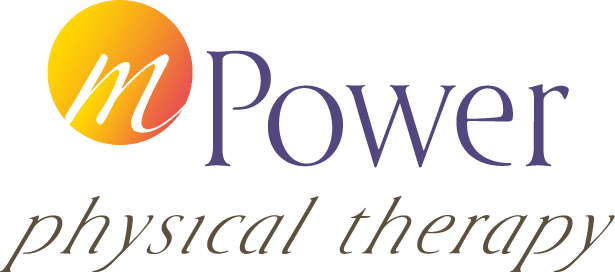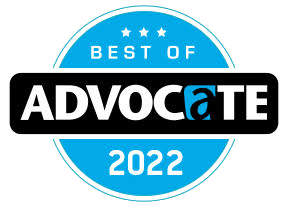Tips Report
at mPower Physical Therapy in Dallas, TX
10 Tips report on Everything You need to know about Physical Therapy to help you regain or maintain your mobility for LIFE without Pain Pills, Medications or Injections.
Here are my 10 Tips report on Everything You need to know about Physical Therapy to help you regain or maintain your mobility for LIFE without Pain Pills, Medications or Injections.
Tip #1: MRI – Imaging and MRI often leads to overtreatments such as expensive surgeries.
The research on imaging is not great. If you take 100 people with no pain or problems (they are able to do everything) and image them, 60-80% of people will show arthritis, degeneration, RTC tears, meniscal tears, etc. It is a part of the aging process and the percentage goes up as we age. Much like getting wrinkles on our face.. It just happens. But now you have pain and you get imaging. Is what was imaged there before your injury? You don’t know…
It is why you need to get a thorough evaluation by a specialist to truly understand what is going on.. Let me tell you a story. I had a patient I tried to see with shoulder pain. She was not getting better with physical therapy (she went to one of those places with multiple patients per therapist and doing cookie cutter exercises without a thorough evaluation). She tried acupuncture, injections, got imaging and it showed a RTC tear. I told her not to have surgery. Let me see you first.. She decided to have the surgery. Here we are 5 months after surgery and she was worse than she was before the surgery. She could not raise her arms to wash her hair. She finally decided to come in to see us.. You see her pain was in her shoulder, but her problem was in her neck!! Yes, we treated her neck within a few weeks she was feeling better for the first time in 2 years.. Please do not wait this long to come in and have us check you out..
Tip #2 How we feel pain and why drugs and injections don’t work…
Mechanical pain is when you have something mechanical wrong (fix able issues with joints, imbalances, over use issues with muscles, tendons and joints, etc). It can also be something that truly needs to get fixed by surgery mechanically. So you need to find a good mechanic (aka physical therapist who understands the body) to help you address your mechanics. Mechanical pain can come and go, be constant, happen with movement and CAN NOT be addressed with drugs (chemicals). It is why you take drugs and they do not work. Most of the time, my patients have not clue how they injured themselves. It is not from a fall or accident. Which is good news and bad news. The good news is, you usually do not need surgery. The bad news is you need to figure out what you are doing and where the source of the problem is located.
Here are a few questions you can ask yourself to determine if you need to medication or just come in and see a movement specialist in physical therapy.
- Does your pain come and go? – Not chemical
- Can you move and increase or decrease your pain? – Not chemical
Tip #3 Where you pain is located is not often where the source of the pain is located
I do not know how many times people come to me and they had knee pain and they went to other healthcare providers and all they did was go to the site of the pain and treat that. The patients sort of get better but not fully. They come into see us and we found out that they had a hip or back issue or a combo of that and the knee.
There is a process. Phase 1: you have to figure out where the sources of the problem are and figure out what you are doing in your daily activities that can be contributing to the problem. This can be multiple issues going on as most of the time you have been compensating for years that eventually breaks the bottom down. You can not go to strengthening without figuring out the source.
Phase 2: Now once we get to the source, you now need to work on the muscle and tightness imbalances. By the time patients get to physical therapist it has been a few months to years. So with injuries that have been around for a while, there will be compensation which causes weakness in areas and tightness in other areas. This needs to be address next.
Phase 3: Getting you back to your activities you love safely. This can be breaking down your technique with whatever activity you want to get back to and progressing your training safely. No many physical therapy offices can do this part. They usually will just let you go when the pain is taken care of.. Then you get back too fast to activities and the pain returns due to tissue tolerance (tissue not tolerating the load or activity by doing too much too soon).
Tip# 4 80% of injuries do NOT need surgery.
We do more surgeries in this country because you guessed it.. We do MRI and imaging without thoroughly evaluating a patient due to lack of time healthcare providers can spend with the doctors. It is easy to do a test and give you a pill or say lets do surgery, because it takes less time. Now I am not say thing happens all the time, but it happens more often than not. Doctors do not know what physical therapist can do, because not all physical therapist are the same. You go to a physical therapist that can not spend time with you and does cookie cutter exercises and it does not work. Which comes to my next tip…
Tip #5 How do you know a Physical Therapist or facility is going to be the right for me.
- Do I get to see the physical therapist one on one for every treatment?
- Can I sit down with the physical therapist to see if they can help me without spending money?
- Do you have any education materials I can read about my condition written by someone in your facility (not from google)?
- Can you give me any ideas or examples of patients you have seen in the past with my condition? Can you give me an example?
Tip #6 How is physical therapy different than chiropractors, massage therapist and personal trainers.
Personal trainers know how to train you for performance, but do not know how to do evaluations to understand where your pain is coming from. If they claim that they do, you might want to find someone else as they might be hurting you. While some will try a few things to see if they can help, but when they realize they cannot, they usually are the first to tell you or refer you to someone who can help like a physical therapist. So often these providers go to the side of the pain and do not address the other parts of the body that could be causing the problem.
Tip # 7 Common Questions: Does physical therapy hurt?
Tip #8 Common Questions: What do I wear?
Tip #9 Common Questions? How do I know this Physical Therapy is Right for me?
Tip #10 Common Questions: When will I see results?
People can see results between the first and third visit. Sometimes it takes time to rule out conditions as we see how the body responds. Remember a knee pain could be coming from the back or hip. There is a process to the evaluation, so we do not miss any piece. After that we continue to provide updated treatments with each visit which is why patients do not need to come in 2-3x a week. You have access to the therapist during the week for any questions or concerns that come up.


